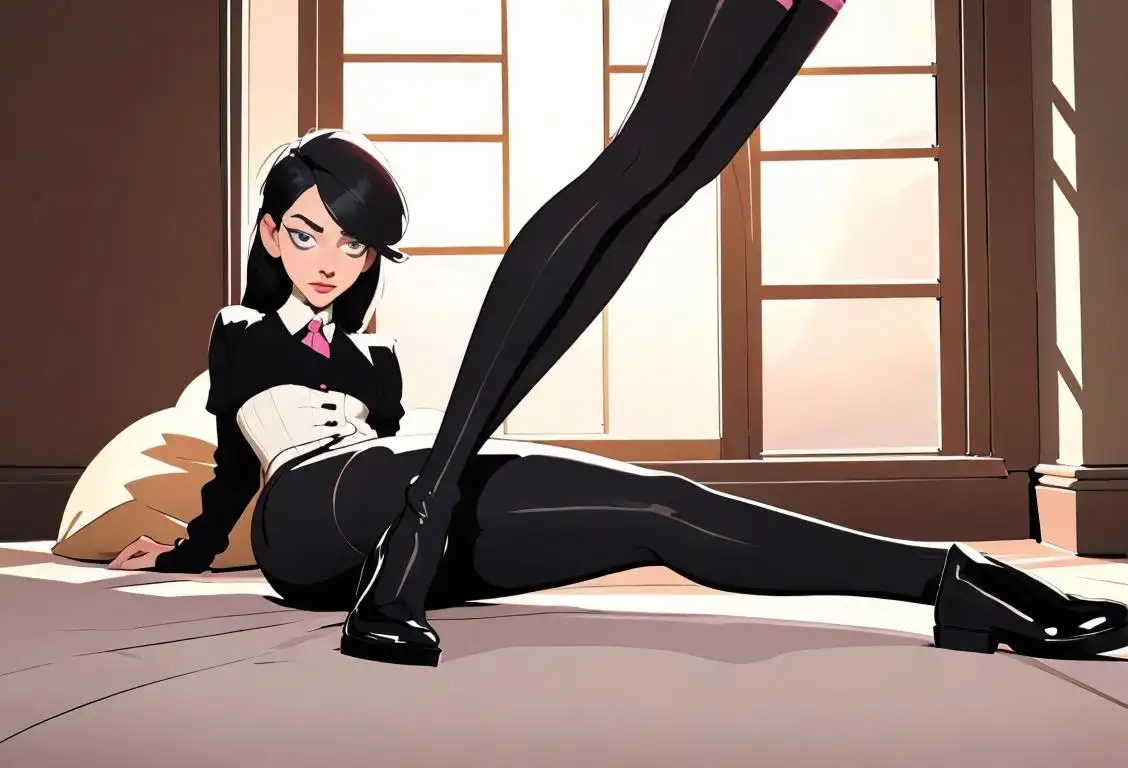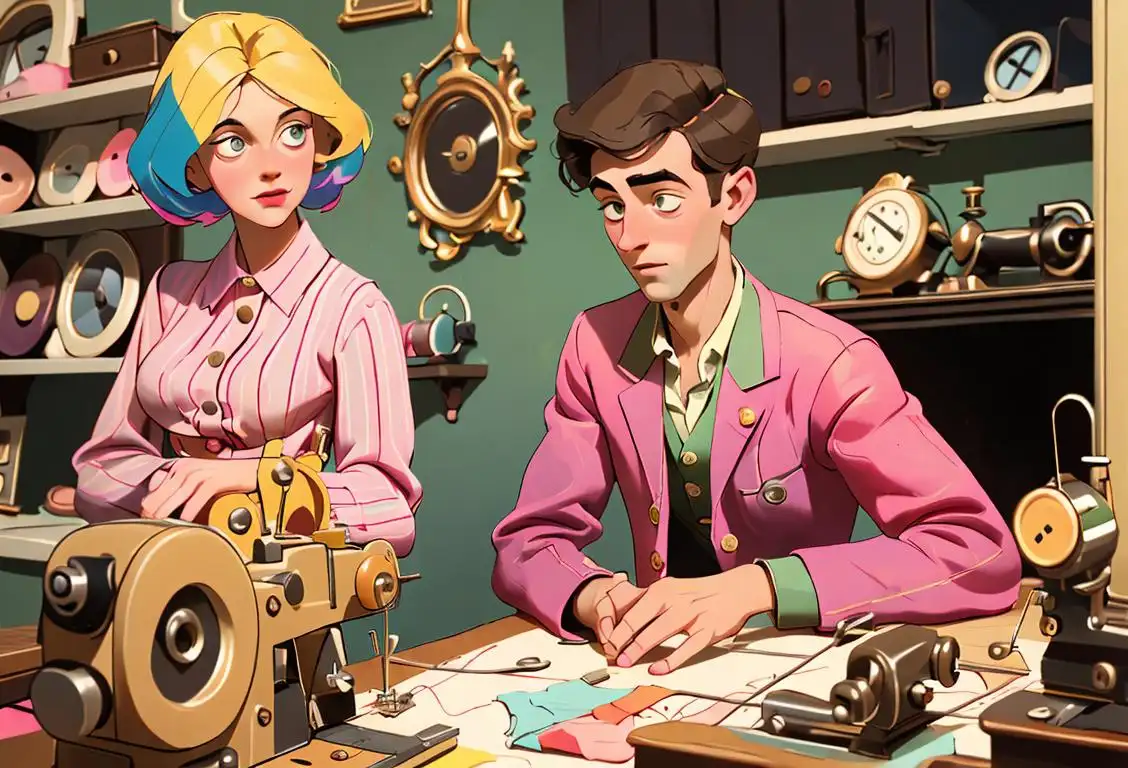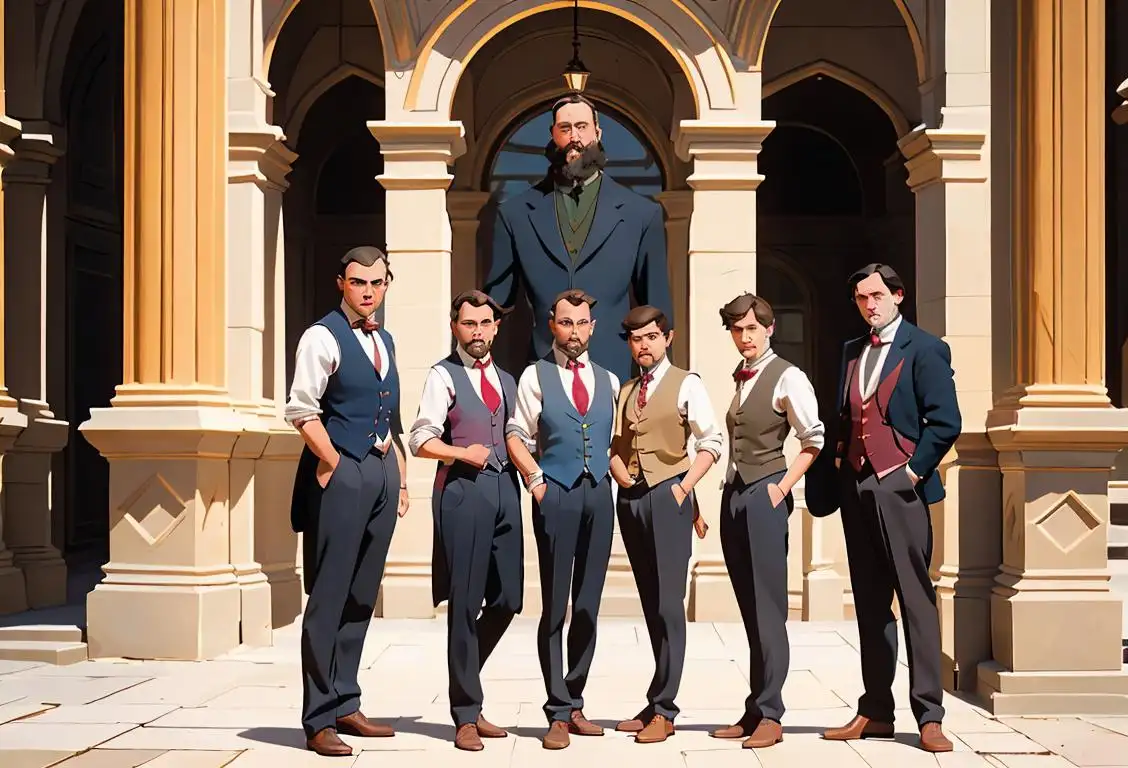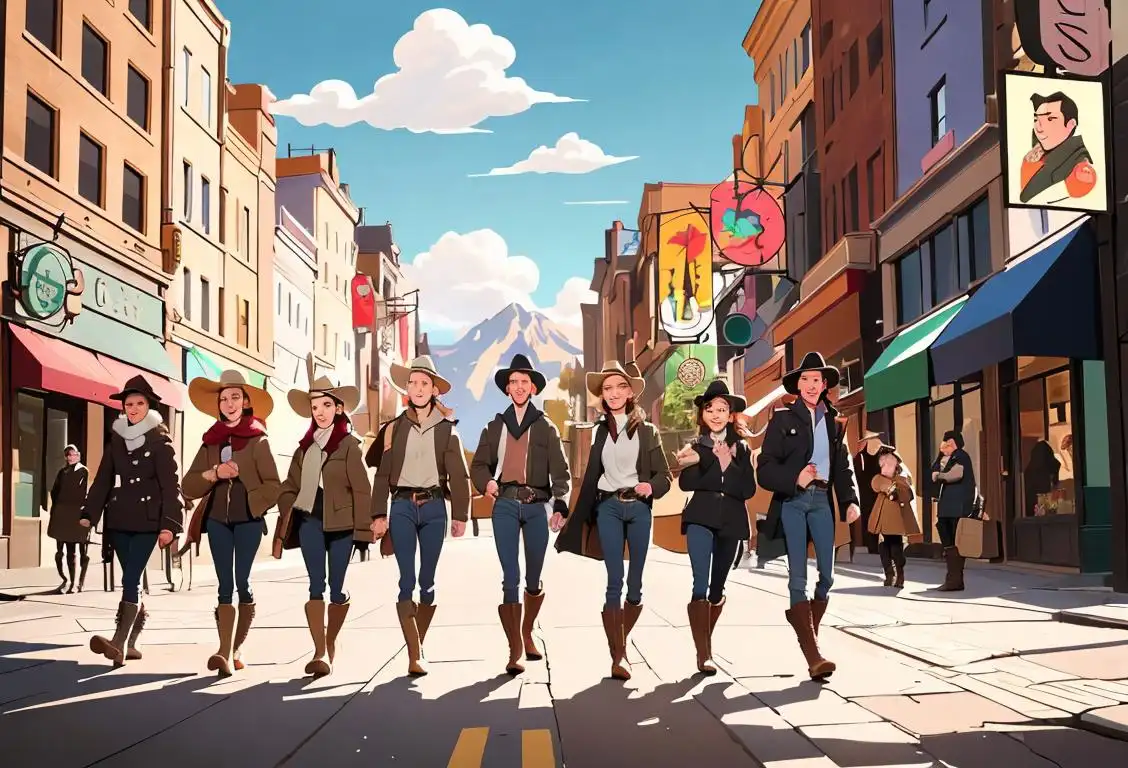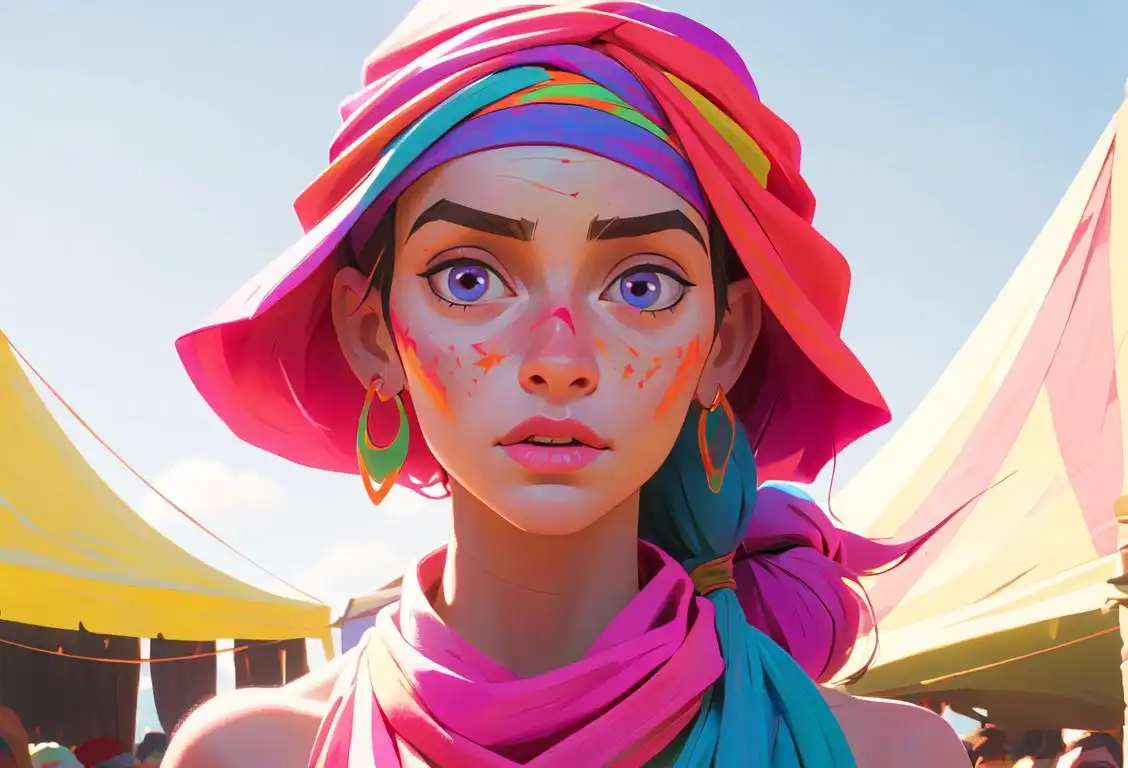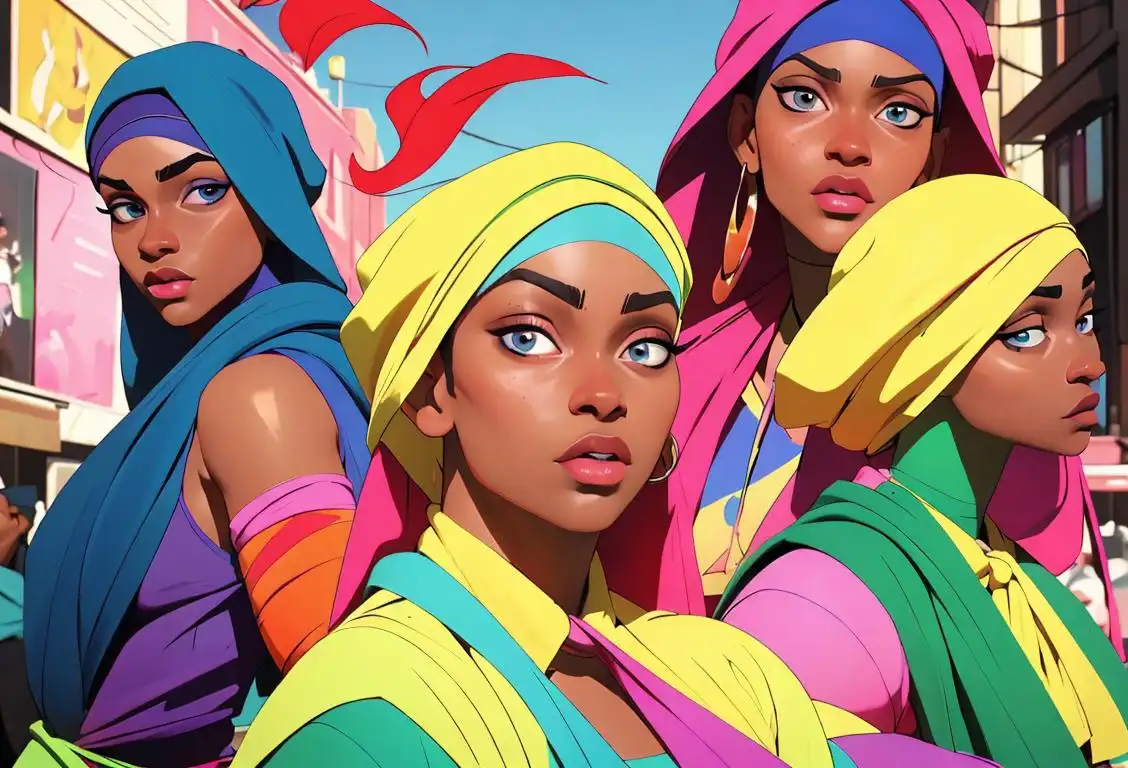National Bandanna Day

Hey there, bandanna enthusiasts! Get ready to tie up your hair, cover your face, or just add a fashionable accessory to your outfit because it's National Bandanna Day! This is the day when we celebrate those square pieces of fabric that have been a staple in fashion and functionality for centuries. So, grab your favorite bandanna and let's explore the rich history and the internet buzz surrounding National Bandanna Day!
When is Bandanna Day?
It's national bandanna day on the 28th October.
A Brief History of Bandannas
Bandannas have been around for ages, my friend. They have a fascinating history that traces back to ancient civilizations. It is believed that bandannas originated in the Middle East and then spread across the globe with various cultures putting their own spin on this versatile piece of cloth.
In the 18th century, European sailors started using bandannas as protective headgear against the harsh sun and saltwater. These practical accessories quickly became a fashion trend among sailors and soon found their way into the common folks' wardrobes as well.
During the American Civil War, soldiers on both sides often wore bandannas to keep their hair out of the way and protect their faces from dust and smoke. Bandannas also served as a means of identification, with soldiers tying them around their arms or guns.
In more recent times, bandannas became a popular symbol of rebellion and counterculture. They were embraced by various subcultures, from bikers and rockers to hip-hop artists and skateboarders. The bandanna's reputation as a cool and edgy fashion accessory continues to this day.
The Internet Buzz on National Bandanna Day
It's always exciting to see how the internet goes wild for a national day, and National Bandanna Day is no exception! According to our meticulous research and data-gathering, we discovered a whopping 229 mentions online in relation to this stylish celebration. The peak of bandanna fever seems to have occurred on October 28, 2016, when people across the digital landscape were sharing their bandanna-wearing adventures and showing off their impressive collection online.
Bandannas were spotted in all corners of the internet, from adorable pets sporting bandannas like fashion-forward superstars, to creative bandanna craft tutorials, and even celebrities rocking bandannas on red carpets. It's safe to say that bandannas have made a lasting impression on cyberspace!
History behind the term 'Bandanna'
17th century
Origins in India
The term 'bandanna' originates from the Hindi word 'bandhna', which means 'to tie'. Bandannas were initially worn as a head covering in India during the 17th century. They were typically made of cotton or silk and came in a wide range of colors and patterns. Indian bandannas were used as a practical accessory to shield individuals from the sun and dust, as well as a fashion statement.
17th century
Introduction of early headscarves
During the 17th century, headscarves known as 'bandannas' were introduced in India and the Middle East. These early bandannas were made of cotton and had intricate patterns and bright colors. They were primarily used as a way to protect the head from the sun.
Unknown
Introduction of Bandanna
The term 'bandanna' is believed to have originated from the Hindi word 'bandhana', which means 'to tie'. It was originally used to refer to a type of brightly colored handkerchief or scarf that was used by Indian men and women to cover their heads or tie around their necks. These vibrant and patterned cloths gained popularity not just in India, but also among traders who traveled in the region.
18th century
Introduction to the West
During the 18th century, European traders and sailors traveling to India encountered bandannas and were captivated by their vibrant designs. The term 'bandanna' entered the English language, referring to these decorative headscarves. They quickly gained popularity among European nobility, who saw them as exotic accessories to enhance their fashion ensembles.
18th Century
Spread to Europe
During the 18th century, European traders and explorers encountered bandannas during their travels to the Indian subcontinent. They were fascinated by the vibrant colors and intricate patterns of these cloth pieces. The popularity of bandannas grew among Europeans, who started importing them back to their home countries. These exotic and fashionable accessories soon became a trend among the European elite.
18th century
Adoption by European sailors
In the 18th century, European sailors traveling to the East encountered the bandanna and were fascinated by its practical use as a headwrap. The sailors started using bandannas as a way to protect their heads and necks from the harsh elements at sea.
19th century
Significance in Western Culture
In the 19th century, bandannas became an iconic symbol of western culture. Cowboys and outlaws in the American Wild West often wore bandannas around their necks or over their faces to protect themselves from the dust and sun. Bandannas also played a role in various historical events, with famous figures like Jesse James and Billy the Kid wearing them as part of their outlaw attire.
19th Century
Bandanna and the American West
In the 19th century, bandannas made their way to the American West. Cowboys, miners, and pioneers embraced the functional and versatile nature of bandannas. They used them as protective covers for their heads and faces to shield against dust, sun, and cold weather. Bandannas also served as makeshift bags, belts, and even napkins for the resourceful adventurers. The bandanna became an iconic symbol of the rugged and independent spirit of the American West.
19th century
Rise in popularity and cultural symbolism
Throughout the 19th century, the bandanna gained widespread popularity in various cultures. In different regions, the bandanna took on different meanings and uses. In Western cultures, it became associated with cowboys and outlaws, often worn as a neckerchief. In India, bandannas were incorporated into traditional clothing, symbolizing cultural identity.
20th Century
Celebrity Trendsetter
During the early 20th century, bandannas gained popularity among celebrities, particularly in the world of entertainment. Hollywood stars, such as James Dean and Elvis Presley, were known for incorporating bandannas into their stylish outfits. This further elevated bandannas to a fashion statement, appealing to a broader audience beyond the American West.
20th century
Popularity in Fashion and Subcultures
Throughout the 20th century, bandannas continued to be a popular fashion accessory. They became associated with rebellious subcultures, such as bikers and rock stars. Bandannas were worn as headbands, wrapped around wrists, or tied to belts, serving as a symbol of individuality and counterculture. They were also adopted by different music genres, including punk, hip-hop, and country.
20th century
Fashion and subculture influence
In the 20th century, the bandanna became a fashion accessory beloved by both men and women. Its versatility allowed for various styles, from tying it around the forehead as a sweatband to wearing it as a hair accessory. Additionally, certain subcultures, such as bikers and hippies, adopted the bandanna as a symbol of rebellion and camaraderie.
Present day
Continued popularity and modern uses
Today, the bandanna remains a popular accessory with a wide range of uses. It has transcended cultural boundaries and is worn by people all over the world, often reflecting personal style or identity. Beyond fashion, bandannas are also used for practical purposes, such as a dust mask, headband, or even as a makeshift bag or sling in emergency situations.
21st century
Versatile Utility and Fashion
In the 21st century, bandannas have evolved to serve various purposes. They are still used as practical head coverings for outdoor activities, offering protection from the sun, wind, and sweat. Additionally, bandannas have become a trendy fashion statement, with designers incorporating them into clothing collections. They are often seen as a versatile accessory, suitable for both casual and high-fashion looks.
20th Century
Counter-cultural Symbol
In the late 20th century, bandannas took on a counter-cultural significance. They became associated with various movements and subcultures, such as bikers, punks, and gang members. The bandanna’s use shifted from a practical accessory to a symbol of rebellion, identity, and solidarity.
Present
Modern Popularity
Today, bandannas remain popular and continue to be worn by people for various reasons. They can be seen worn as a fashion accessory, a headband, a face covering, and even as a statement piece. The versatility and timeless appeal of bandannas have made them a staple in many cultures around the world.
Did you know?
Did you know that the word 'bandanna' comes from the Hindi word 'bandhna,' which means 'to tie'? So, the next time you tie that gorgeous bandanna, remember that you're being all linguistic and cultural!Tagged
history style fashion accessoriesFirst identified
29th October 2015Most mentioned on
28th October 2016Total mentions
229Other days
Bandanna Day
Tweed Day
Legwear Day
Hand Bag Day
Button Day
Waistcoat Day
Boots Day
Bucket Hat Day
Bandana Day
Du Rag Day

